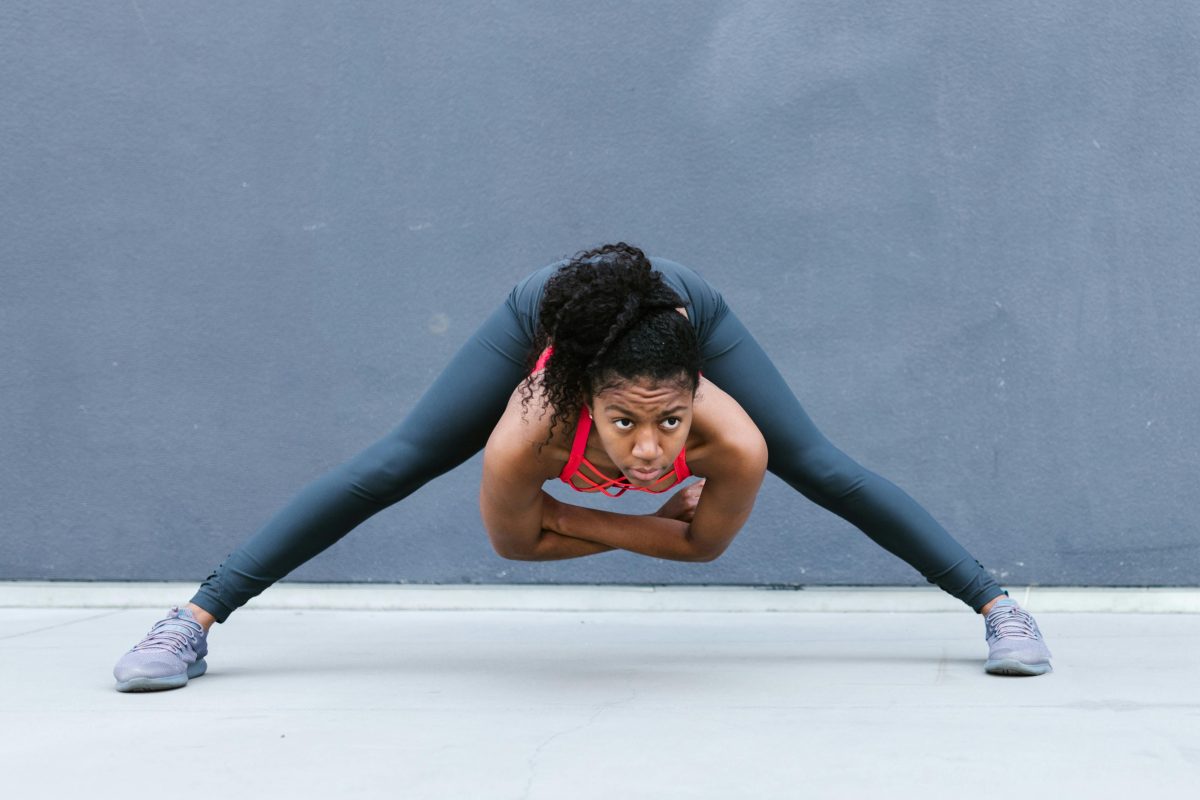Last Updated on: 14th July 2024, 09:31 am
Introduction to Calisthenics

Calisthenics, a practice as ancient as it is effective, roots itself in the very foundation of physical training. Originating from the Greek words ‘kalos’, meaning beauty, and ‘sthenos’, meaning strength, it embodies the art of using one’s body weight for resistance training. This form of exercise not only sculpts the body into its most aesthetically pleasing form but also enhances one’s physical capabilities in ways that are profound and lasting.
- Benefits of Calisthenics: Promotes cardiovascular health, improves flexibility, boosts endurance, and significantly increases overall strength.
- Accessibility: Allows individuals to engage in these exercises anywhere, anytime, making it a versatile option for maintaining physical fitness.
This article aims to guide beginners through the fundamentals and progressions of calisthenics. By breaking down the complexities into manageable steps, we embark on a journey to unlock the full potential of our bodies. Through dedication and perseverance, the transformation that follows not only enhances physical health but also instills a sense of accomplishment and confidence.
Understanding the Fundamentals

The Importance of Mastering Basic Movements
At the heart of calisthenics lies the mastery of basic movements. These foundational exercises, such as push-ups, pull-ups, and squats, are the building blocks for more complex routines. Mastering them ensures a solid base, minimizing the risk of injury and maximizing the effectiveness of your workouts. It’s akin to learning the alphabet before writing a novel; essential and non-negotiable.
Key Principles of Form and Technique
- Form: Ensures that each movement targets the intended muscle groups without straining other areas.
- Technique: Paying close attention to technique, from the alignment of your spine to the positioning of your hands, can dramatically enhance the efficiency of your workout and prevent common injuries.
The Role of Consistency and Patience in Progress
Consistency and patience are your allies on the journey to physical prowess. Progress in calisthenics, as in any form of exercise, is not instantaneous. It requires dedication, with regular practice being paramount. Equally, patience is crucial. The body adapts and strengthens over time, not overnight. Embracing these virtues can transform your calisthenics journey from a fleeting endeavor into a lifelong pursuit of health and strength.
Essential Calisthenics Exercises for Beginners

Push-ups: Variations and Progressions
- Start with wall push-ups if you’re a novice, gradually transitioning to knee push-ups, and finally, standard push-ups.
- Experiment with hand positions to target different muscles, enhancing your strength and versatility.
Pull-ups and Chin-ups: Building up to Your First Rep
- Start with negative pull-ups—jumping up and slowly lowering yourself—can build the necessary strength.
- Use resistance bands for assistance, making the exercise more accessible.
Squats: Foundation of Lower Body Strength
- Begin with bodyweight squats, ensuring proper form: feet shoulder-width apart, back straight, and lowering until thighs are parallel to the ground.
- Progress by adding variations like jump squats or single-leg squats, continuously challenging your muscles and balance.
Planks: Core Strengthening Basics
- Start with forearm planks, focusing on maintaining a straight line from head to heels.
- Gradually increase your hold time, and introduce variations like side planks to target different areas of your core.
Designing Your First Calisthenics Routine

Setting Realistic Goals and Expectations
Embarking on your calisthenics journey begins with setting achievable goals. Whether it’s mastering a pull-up or holding a plank for a minute, your objectives should inspire progress without overwhelming you. Realistic expectations serve as your roadmap, guiding each step with purpose and clarity.
Structuring a Balanced Workout
- Frequency: Start with three workouts per week, allowing your body to adapt to new challenges.
- Intensity: Comes from the complexity of exercises and the effort you invest.
- Volume: The total number of repetitions and sets, should increase gradually.
Incorporating Rest and Recovery
Rest days are as crucial as workout days. They allow your muscles to recover and grow stronger. Incorporate at least one full rest day between sessions, focusing on hydration, nutrition, and sleep. Active recovery, such as light stretching or walking, can also enhance your progress, keeping the body engaged without overexertion.
Progressing in Calisthenics: Overcoming Plateaus

Recognizing Signs of a Plateau
Stagnation in progress can often signal a plateau. This might manifest as an inability to increase repetitions, difficulty in advancing to more complex exercises, or a general feeling of not improving. It’s crucial to identify these signs early to adjust your training regimen accordingly.
Strategies for Continuous Improvement
Breaking through a plateau requires strategic adjustments to your workout routine. Increasing the intensity and volume of your exercises can stimulate muscle growth and strength gains. For instance, adding weight to bodyweight exercises or incorporating more sets and reps can provide the necessary challenge to push past stagnation.
Exploring advanced variations of foundational movements is another effective strategy. Transitioning from standard push-ups to archer push-ups, or from pull-ups to muscle-ups, introduces new challenges, ensuring continuous progression.
The Importance of Diversifying Your Routine
Diversification is key to sustained progress in calisthenics. Regularly altering your routine prevents your body from adapting too well to a specific set of exercises, a phenomenon that can lead to plateaus. Incorporating a variety of movements not only enhances overall body strength but also keeps workouts engaging and enjoyable. Experimenting with different exercise combinations, altering your workout environment, or even integrating other fitness disciplines can rejuvenate your training and propel you forward.
Overcoming plateaus in calisthenics is a testament to your commitment to growth. By recognizing the signs of stagnation, strategically increasing workout intensity, and diversifying your routine, you can ensure continuous improvement. Embrace the challenge, and let each breakthrough fuel your journey towards achieving peak physical form.
Nutrition and Recovery for Calisthenics Athletes

Nutrition: The Muscle Building and Recovery Catalyst
Proper nutrition is the fuel that drives the calisthenics athlete’s engine, serving as a critical component for muscle building and recovery.
- Proteins: the building blocks of muscle repair and growth, necessitating a diet rich in lean meats, legumes, and dairy.
- Carbohydrates: replenish energy stores, making whole grains and vegetables indispensable for sustained performance.
- Fats: essential for hormone production and joint health, with avocados and nuts being excellent sources.
Hydration: The Unsung Hero of Peak Performance
Hydration goes beyond quenching thirst; it’s a vital element in maintaining peak performance.
- Water regulates body temperature, lubricates joints, and helps transport nutrients to give you energy.
- For calisthenics athletes, staying hydrated means better endurance, reduced fatigue, and a lower risk of injury.
- It’s not just about drinking water; it’s about ensuring you’re well-hydrated before, during, and after your workouts.
Sleep and Rest: The Foundation of Recovery
While the body is at rest, the magic of recovery happens. Sleep is the cornerstone of this process, providing the body with the time to repair and strengthen itself.
- Aim for 7-9 hours of quality sleep per night to support recovery and improve cognitive function, mood, and overall health.
- Rest days are equally important, allowing muscles to rebuild and adapt to the stresses of training.
- Embrace these periods of downtime as opportunities for growth and rejuvenation.
Integrating these elements of nutrition, hydration, and rest into your calisthenics routine will not only enhance your performance but also accelerate your progress. By nourishing your body, staying hydrated, and getting ample rest, you set the stage for a successful and sustainable practice.
Building a Supportive Community and Staying Motivated

Finding and Engaging with Calisthenics Communities
Embarking on a calisthenics journey can be transformative, and finding a supportive community can significantly enhance this experience.
- Engaging with both online forums and local groups provides invaluable resources, from tips and tutorials to motivation and camaraderie.
- These communities offer a platform to share successes, challenges, and insights, fostering a sense of belonging and collective progress.
The Benefits of Having a Workout Partner or Coach
A workout partner or coach can be a game-changer in your fitness journey.
- They not only hold you accountable but also provide immediate feedback, helping refine your technique and push your limits.
- The encouragement from someone who believes in your potential can be the catalyst for breakthroughs, turning daunting challenges into achievable milestones.
Setting New Goals and Celebrating Achievements
Goal setting is crucial for sustained motivation.
- Start with attainable targets, gradually increasing their difficulty as you progress.
- Each achievement, no matter how small, deserves recognition.
- Celebrating these victories reinforces your commitment and fuels your desire to reach new heights.
Building a supportive community, engaging with a workout partner or coach, and continuously setting and celebrating goals are foundational elements in maintaining motivation and achieving success in calisthenics. These strategies not only enhance your physical capabilities but also enrich your journey with meaningful connections and personal growth.
In Closing
Calisthenics transforms bodies and lives. It’s a journey of strength, beauty, and resilience. Through mastering the fundamentals to overcoming plateaus, this practice offers a path to unparalleled physical and mental growth. Embracing consistency, technique, and community support paves the way for continuous improvement and personal achievement. Let this be your invitation to embark on a transformative journey, unlocking your potential and sculpting a stronger, more confident you.
Calisthenics for Beginners: Fundamentals and Progressions FAQs
Yes, calisthenics can be an effective way to lose weight when combined with a balanced diet. It involves compound exercises that engage multiple muscle groups, leading to higher energy expenditure. Over time, this can result in fat loss and muscle definition.
Calisthenics can indeed improve flexibility, as many exercises incorporate a range of motion that stretches the muscles. Movements like lunges and squats, when performed correctly, can enhance flexibility in addition to strength. Consistently practicing these exercises will lead to improvements in both flexibility and mobility.
If basic exercises are too challenging, start with modified versions or use assistance, such as resistance bands. For example, knee push-ups instead of regular push-ups or assisted pull-ups. This approach allows you to build strength gradually and safely progress to more difficult variations.
Results from calisthenics can typically be seen within 8 to 12 weeks of consistent practice, depending on your starting point and intensity. Initial improvements will be in strength and endurance, followed by changes in muscle tone and body composition. Consistency and progressively challenging the muscles are key to seeing ongoing results.
As a beginner, aim to practice calisthenics 2-3 times per week. This frequency allows your body to adapt to the new physical demands while providing ample recovery time. Gradually, as your strength and endurance improve, you can increase the frequency of your workouts.
Yes, warming up before calisthenics is essential to prepare your body for the workout and prevent injuries. A good warm-up increases blood flow to the muscles and improves joint mobility. Dynamic stretches and light cardio exercises are effective ways to warm up.
Fundamental calisthenics exercises include push-ups, pull-ups, squats, and planks. These exercises lay the foundation for building strength and endurance across the body’s major muscle groups. Mastering these basics is crucial before progressing to more advanced movements.
Minimal equipment is required to start calisthenics, often just your body weight. However, having access to a pull-up bar and parallel bars can greatly expand the variety of exercises you can perform. These tools allow for a broader range of movements targeting different muscle groups.
A balanced calisthenics workout for beginners should include exercises that target all the major muscle groups, structured in a circuit or with rest between sets. Start with exercises for the larger muscle groups and progress to those that target smaller muscles. This approach ensures a comprehensive workout that promotes balanced muscle development.
If you hit a plateau, it’s important to vary your routine by incorporating new exercises, increasing the intensity, or adjusting the volume. Changing the number of reps, sets, or incorporating advanced variations can challenge your body in new ways. This helps to stimulate further improvements and overcome the plateau.
Orlando is a all round athlete from Australia, now resident in Germany. His sports of passion of American Football(Offensive line), weight training and indoor rock climbing where he uses his 195cm wing span to his advantage.



